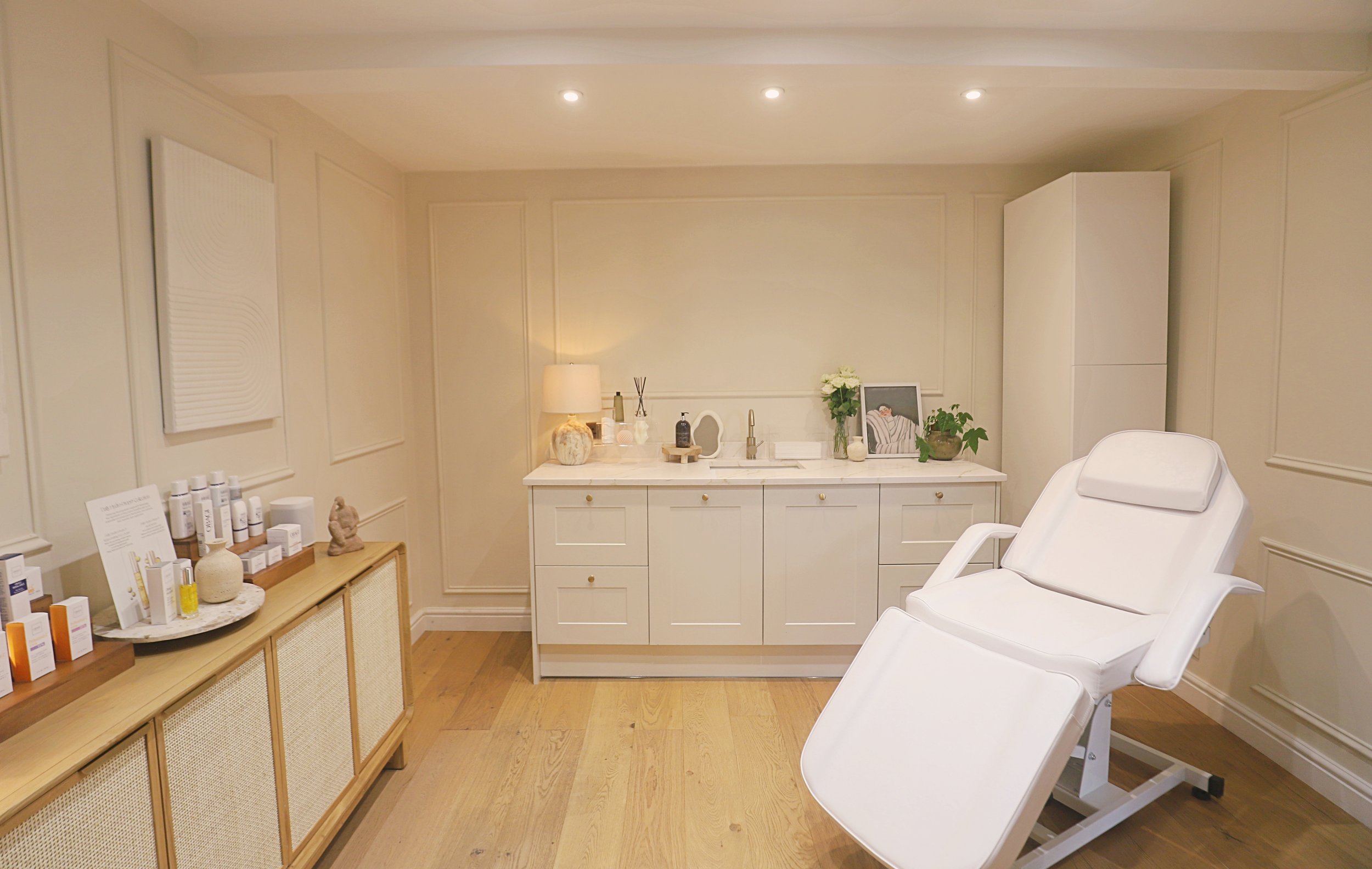Signs You’re Overdoing Your Aesthetic Treatments (and How to Stay Subtle)
Discover expert skin science insights from our award-winning holistic aesthetic clinic in Altrincham. Written by Dr Caroline Warden an NHS GP, cosmetic dermatology specialist and leading aesthetic doctor in Hale, South Manchester
The world of aesthetic medicine has shifted dramatically over the past decade. Patients today want subtle, undetectable results, treatments that enhance rather than transform. Yet with the rise of social media trends, filter culture, and the popularity of injectables…
It has become surprisingly easy to go too far without realising it.
As a doctor-led aesthetic clinic in Hale, Altrincham one of the most common concerns new patients bring is:
“I want to look fresher but I don’t want to look done.”
This blog breaks down the key signs you may be overdoing your aesthetic treatments, why it happens, and how to achieve natural, elegant results that age beautifully.
Why Some People Accidentally Go Too Far
Overfilled cheeks, frozen foreheads and distorted lip shape are rarely intentional. They usually happen because:
patients treat one area in isolation
injectors don’t assess facial balance
more filler is added before previous filler dissolves
patient becomes used to looking “enhanced”
trend-driven treatments outweigh clinical judgement
A responsible practitioner always prioritises proportion, anatomy and long-term ageing not maximum
1. You’re Losing Natural Facial Expression
A completely frozen forehead or immobile eyebrows is a key sign that botox injections may be overdone or incorrectly dosed.
Signs include:
difficulty raising your brows
inability to show surprise or concern
eyes appearing heavier or smaller
flat or “mask-like” upper face
Natural botox injections should soften expression lines without removing expression entirely. A doctor should tailor doses carefully to your facial strength, muscle bulk and desired movement.
2. Your Face Looks “Puffy” or Overly Rounded
Excess dermal filler particularly in cheeks, under eyes or jawline can create a puffy, swollen or “pillow face” appearance.
This often happens when:
filler accumulates over multiple treatments
too much is placed in one area
poor injection techniques are used
the natural fat pads of the face are not respected
In most cases, the face should show natural contour, not uniform roundness.
3. Your Lips Look Overfilled or Distorted
Unnatural lips are one of the easiest signs of overtreatment.
Indicators include:
lips that project too far forward
loss of the natural border
“duck lip” or “M-shaped” distortion
prominent lumps or asymmetry
lips that appear disconnected from surrounding facial features
Beautiful lip enhancement should respect proportion, create hydration and shape, and avoid excessive projection.
4. You’re Chasing Trends Rather Than Facial Harmony
The best aesthetic outcomes come from enhancing your unique features, not copying a celebrity or TikTok trend.
Overtreatment often happens when people chase:
ultra-high cheekbones
exaggerated jawlines
“fox eye” thread lifts
overly sharp chins
extremely smooth foreheads
These trends often don’t age well and may not suit your natural anatomy.
A subtle, artistic approach always lasts longer and looks better.
5. You Need More Filler to Maintain the Same Look
If you feel like your face “deflates” quickly or you need repeated top-ups, it may be a sign filler is:
migrating
poorly placed
fighting against swelling
disrupting natural tissue planes
Filler shouldn’t need constant topping up. A well-balanced treatment plan supports the face’s natural movement and long-term structure.
6. You No Longer Recognise Yourself in Photos
Perhaps the most telling sign is emotional rather than physical.
Many patients describe:
feeling like they look different to how they feel
appearing overdone in candid photos
having a “filtered” look even without makeup
family or friends commenting on changes
If you feel disconnected from your appearance, it’s time to reassess your treatment plan.
Case Study: “Claire”, Age 42 – Restoring a Natural Look After Overtreatment
(Name changed for privacy)
Claire came to my clinic in Hale feeling frustrated and unhappy with how her face looked. She had been having regular aesthetic treatments at different clinics across Manchester, often booking individual areas without a long-term plan.
Her concerns:
cheeks looked heavy
eyes appeared smaller
lips felt “too big” and uneven
overall appearance looked puffy
What we found during consultation:
Filler had migrated from tear troughs into the mid-face
Cheeks were overfilled, creating heaviness
Lips had disproportionate volume in the top lip
Botox injections were too strong, reducing expression
The treatment plan:
Dissolved unnecessary filler in cheeks, lips and under-eye area
Allowed natural healing time of 2–4 weeks
Rebuilt structure using minimal, precise filler placement
Adjusted anti-wrinkle doses to restore natural expression
Introduced microneedling with exosomes to improve skin quality
Implemented a medical-grade skincare routine to support collagen
The outcome:
Facial proportions restored
Lips regained natural shape
Eyes appeared brighter
Expression returned
Overall look: fresh, elegant and subtle
Claire later said:
“I finally look like myself again. I didn’t realise how far I’d gone until I saw the before and after.”
This is why a doctor-led, holistic approach matters.
How to Stay Subtle: A Doctor-Led Approach That Works
1. Treat the Face Holistically
Natural results come from balancing:
skin quality
volume
muscle activity
facial proportions
long-term ageing pattern
Not from treating one area at a time.
2. Use the “Less Is More” Philosophy
Start with minimal doses.
Enhance slowly.
Review and refine as needed.
This allows your results to evolve naturally, not suddenly.
3. Prioritise Skin Quality First
Healthy skin means you need less filler and fewer injectables.
Treatments such as:
…can dramatically improve radiance without altering your facial structure.
4. Allow Time Between Appointments
Spacing appointments prevents overtreatment and lets you adapt to subtle improvements.
5. Choose a Doctor Who Understands Anatomy and Aesthetics
A doctor-led clinic is trained to:
avoid migration
respect tissue planes
understand ageing changes
maintain balance
say “no” when a treatment isn’t appropriate
This is essential for long-term, natural-looking outcomes.
Frequently Asked Questions (FAQs)
1. How do I know if I’ve had too much filler?
If your face looks puffy, heavy, distorted or lacks natural contour, you may have had too much or filler may have migrated. A consultation can determine whether dissolving is needed.
2. Can overdone lips or cheeks be corrected?
Yes. Hyaluronic-acid based filler can be dissolved safely, then replaced with a subtle, strategic approach that suits your features.
3. Do I need a lot of filler to look younger?
No. Often small amounts placed correctly, combined with good skin treatments, achieve better results than large volumes.
4. Will dissolving filler make me look worse?
Most patients look better afterwards, as it restores natural facial structure before any subtle enhancement is reapplied.
5. How often should I get anti-wrinkle injections to avoid the overdone look?
Most patients have them every 3–4 months. Overdoing frequency or dose leads to frozen expression.
6. Why do some clinics create the “overfilled” look?
It usually happens when treatments are done without:
proper assessment
understanding of ageing anatomy
consideration of balance
long-term planning
A doctor-led clinic prioritises subtle, safe outcomes.
Want a personalised skin & aesthetic plan?
Book now for a consultation!
Dr Caroline Warden is an experienced NHS GP and aesthetic doctor. She has been a medical doctor for over 18 years. Her main Skin and Aesthetic Clinic is located in Hale, Cheshire but she also runs clinic in Disley, Stockport.
Whether you're new to aesthetic treatments or ready to refine your routine, her bespoke skin assessments are the best place to start. She’ll design a tailored plan based on your skin goals, lifestyle, and timeline.
Book your consultation at the clinic in Hale, Cheshire and experience aesthetic medicine.
You’ll be guided through your medical history, goals, and expectations so you can make an informed choice.
Our main Hale clinic is local To:
Alderley Edge, Altrincham, Bowdon, Bramhall, Hale Barns, Knutsford, Manchester, Mobberley, Sale, Timperley, Urmston, Wilmslow, Handforth, Poynton, Cheadle, Didsbury, Warrington
Our satellite Disley clinic on Thursday nights at Scott, Skin & Co, is local to:
New Mills, High Lane, Marple, Mellor, Whaley Bridge, Hayfield, Stockport
References & Further Reading
Kapoor, K.M. et al. (2025). *Overfilled Face Syndrome: A Narrative Review and Classification Framework.
[https://journals.sagepub.com/doi/10.1177/30499240251376908]
This review examines the clinical and aesthetic complications associated with excessive dermal filler use. It introduces the concept of ‘Overfilled Face Syndrome’, describing facial distortion, loss of natural contour, and reduced emotional expression, highlighting the importance of proportional, conservative treatment planning.
2. Hong, G.W. et al. (2024). Adverse Effects Associated with Dermal Filler Treatments. Diagnostics (MDPI).
[https://www.mdpi.com/2075-4418/14/15/1640]
A comprehensive overview of filler complications including migration, vascular events, nodules, and aesthetic imbalance. The study stresses the importance of ‘appropriate injector training and controlled dosing’ to reduce risks and maintain natural facial structure.
3. Kempa, J. et al. (2025). Effects of Facial Regional Changes Following Excessive Aesthetic Treatments: A Survey & Eye-Tracking Study.
[https://www.sciencedirect.com/science/article/pii/S1748681525002682]
This study used public perception analysis and eye-tracking and found that over-treated faces draw attention to unnatural regions and are perceived as less trustworthy, less healthy, and less attractive. Reinforces the value of subtle aesthetics.
4. Peng, C.X. et al. (2025). Causes, Consequences & Management of Facial Over-Filling.
[https://www.tandfonline.com/doi/abs/10.2147/CCID.S539888]
A review discussing why overfilling occurs (patient pressure, trends, lack of anatomical assessment), and management strategies including dissolving hyaluronic acid and restoring natural ratios. Encourages a holistic, long-term approach to planning.
5. Journal of Aesthetic Nursing (2019). When Does the Exquisite Become Excessive in Lip & Facial Fillers?
[https://www.magonlinelibrary.com/doi/10.12968/joan.2019.8.5.220]
A reflection on aesthetic boundaries and how subtle enhancements can quickly tip into an over-done appearance. The article emphasises ethical practice, patient education, and less is more’ principles in modern aesthetic medicine.
7. Harley Academy (2024). How to Avoid Overfilled Cheek Filler Results.
A practical insight into avoiding poor outcomes by respecting anatomy, using conservative filler volumes, and reviewing patients regularly. Encourages staged treatment as a safer alternative to single-session overfilling.








